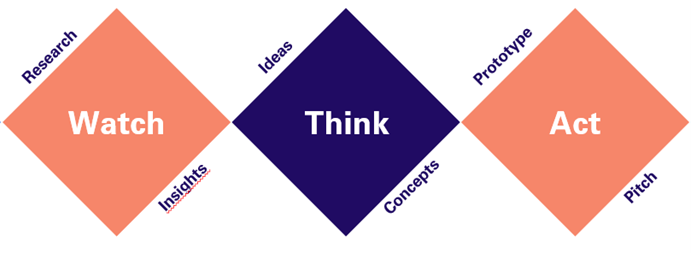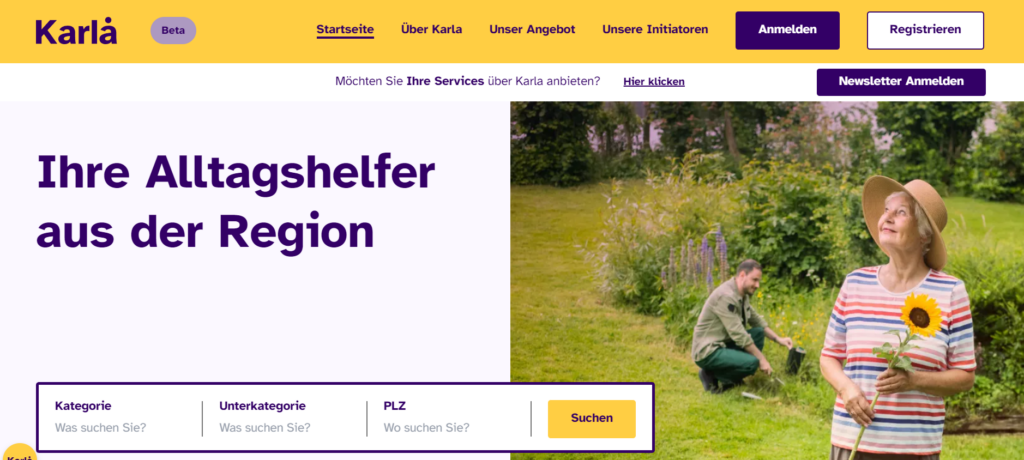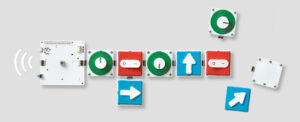Introduction
In the Summer of 2019, the three regional banks Saalesparkasse, Sparkasse Gummersbach, and Sparkasse Vorpommern aimed to develop a product that leverages their strong ties with both private customers and regional businesses.
After a two-week introductory period, in which the consulting agency taught the bankers new agile methods such as SCRUM, Design Thinking, and Design Sprints, the actual project work began.
The Design Thinking approach

The Watch phase
In the first phase, Watch, the team did a lot of research, looking at many things ranging from global Megatrends to the different life phases and situations of the individual customer. They sought out specific topics that are most relevant to the customer group of the banks. They decided to focus on the topics Aging, Care, Health, and Regional Products.
To better understand their customers, the team developed a set of interview questions for each topic and conducted an extensive interviewing process. In every region, they interviewed around 30 customers for 90 minutes each to gain a deep insight into their daily lives. They especially looked out for pain points that the banks could help to solve. Based on these interviews, the team developed a customer profile for each individual and then consolidated them into four typical personas.
Now, the team tried thinking of typical customer journeys for each of the personas in each of the four focus topics. Within these journeys, they highlighted challenges that the personas faced. In total, they identified more than 150 pain points where customers regularly faced problems.
The Think phase
During the Think phase, the team employed several brainstorming techniques such as brainwriting and focus groups to generate as many ideas as possible to tackle the identified pain points. They purposely followed the mindset that “There are no bad ideas” and collected every idea that came to mind. This led to the generation of over 200 ideas which they later evaluated through a rigorous prioritization process.
The team carefully considered every idea, rating them on their feasibility, potential impact, and alignment with the bank’s values. This process helped them narrow down the number ideas to four, which they believed had the most potential to solve their customers’ problems. They decided to focus on one main idea for each of the four focus topics they had identified earlier.
The Act phase
In this case, “Acting” meant prototyping a website and clicking models for each of the solutions. The team started by drawing ideas on a whiteboard and quickly iterating through them. For the first acceptable idea, they created mockup websites and showed them to people in the street. Using this feedback, they started to create better and more sophisticated prototypes adding clickable buttons and more functionality. After multiple iterations of quick feedback and improvements, they combined the current state into one last prototype that they then gave to a market research agency. Together with them, they started a campaign inviting different customers to look at the websites and click around. This helped them see, where customers were instinctively looking for functionality and how well the current design worked.The Final product
After making final refinements based on the feedback obtained during market research, they presented the top four ideas to the managers of the three regional banks. After a lot of testing and many considerations, the team decided to move forward with hallokarla.de, a platform for the elderly, where they can find all kinds of services from lawn mowing to physiotherapy. It is optimized for the problems of the elderly and makes the process of getting help using a regional company as easy as possible.
After finding the idea and prototyping it using the Design Thinking approach, a new project got started, to turn the idea into reality. The team came up with a business plan, created a new company, and started developing the website. Currently, they are working on adding the regional businesses to the platform and unifying the checkout process to fit it to the needs of the users. You can visit the current state of the project at hallokarla.de.




